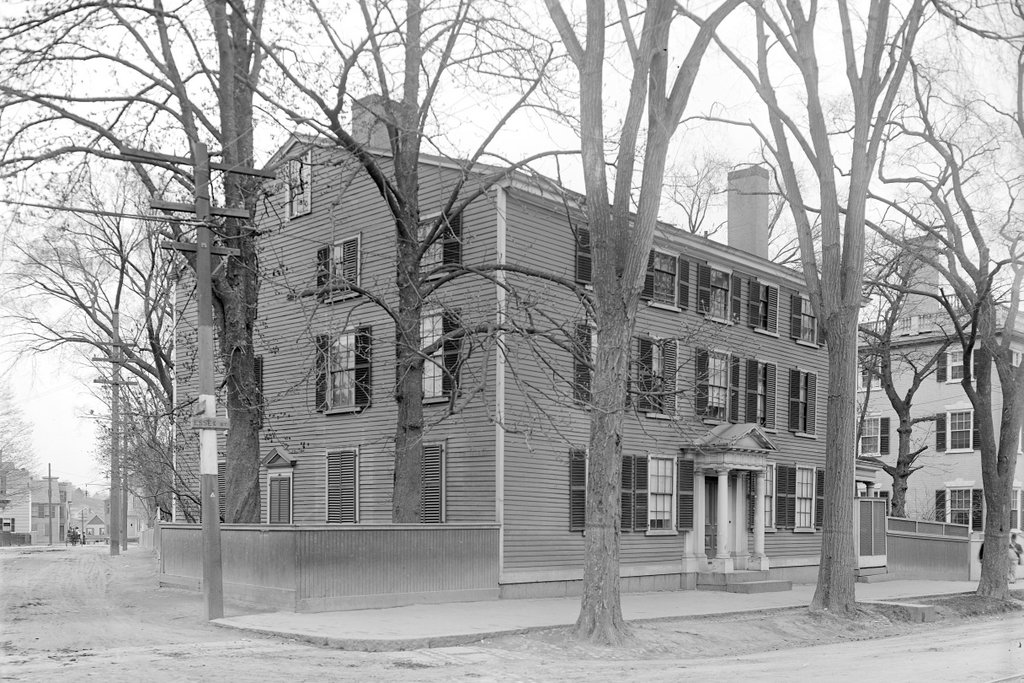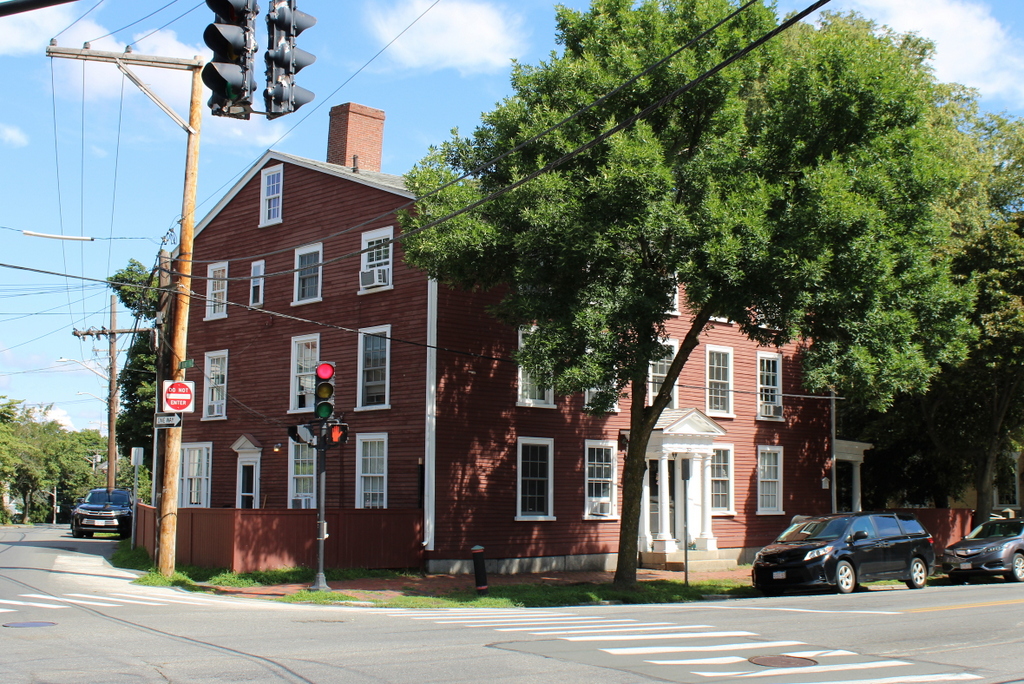The house at the northeast corner of Essex and Flint Streets in Salem, probably around 1890-1910. Image courtesy of the Phillips Library at the Peabody Essex Museum, Frank Cousins Glass Plate Negatives Collection.
The house in 2023:
This house has been expanded and altered many times over the years, but it is said to have been built around 1706 as the home of Captain Joseph Dean and his wife Elizabeth Flint. He did not get to enjoy the house for very long, because he died in 1709, but the house would remain in his family for many years, until it was sold around 1775.
The next owner of the house was Colonel Joseph Sprague, who served in the American Revolution. He also played a role in Leslie’s Retreat, a confrontation in Salem between British redcoats and colonial militiamen that occurred a little less than two months before the battles of Lexington and Concord. He lived here until his death in 1808, and the house was subsequently inherited by his daughter Sarah.
Sarah Sprague had married Dr. William Stearns in 1781, and by the time she inherited this house they had ten children. The third floor of the house appears to have been added at some point around this time, as was the portico above the front door, which is believed to have been made by Samuel McIntire, the famous architect and builder.
The Stearns family owned the house throughout the 19th and early 20th centuries. The 1880 census, for example, shows William and Sarah’s daughter Harriet—who by this point was 79 years old—living here with her nephew William and his family. This younger William Stearns was a lawyer, and he was the son of William and Sarah’s youngest child Richard Stearns. By 1880 he was 57 years old, and his family here included his wife Hannah and their sons William and Richard, both of whom were also lawyers. The family also employed three live-in servants here.
The first photo was taken at some point around the turn of the 20th century. By then, the house had undergone further changes, including additions to the back and right side. It also had a porch on the right side, which is partially visible in the photo. William Stearns died in 1905, but his son Richard subsequently inherited the house. He was the great-great grandson of Joseph Sprague, making him the fifth consecutive generation to own the property. During the 1910 census he was living here with his wife Carrie, their five children, and two servants.
The house ultimately remained in the family until 1930, and it was subsequently converted into an inn and tea house known as the East India House. It has since been converted into apartments, with a total of eight units in the building. On the exterior, though, not much has changed in its appearance. The shutters—which would not have been original to the house—have been removed, but overall it still looks essentially the same as it did at the turn of the century. Along with the other nearby homes, it is now part of the Chestnut Street District, which was added to the National Register of Historic Places in 1973.


